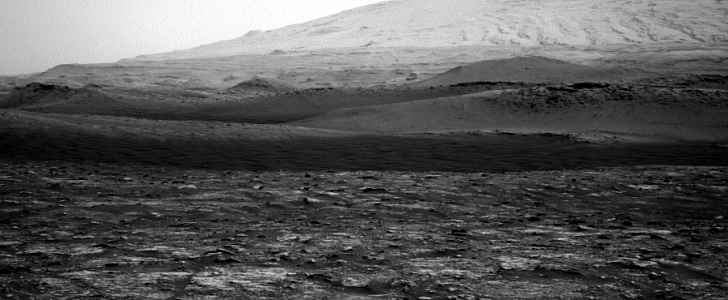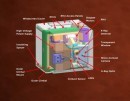Not long ago, the most ambitious human-designed mission to the Red Planet took off from Earth. Generically called the 2020 Mars Mission, the effort is all about a rover called Perseverance and its struggles to finally answer some of the most difficult questions we have about our neighboring planet.
There’s quite some time left before the rover reaches its designated work area, the Jezero Crater. Landing is expected to take place in February 2021, and that means that aside from the occasional updates NASA will be giving on the rover and the accompanying tech, there’s not much to look forward to in respect to Mars in the immediate future.
Only there is. Even though we kind of forgotten about it, we still have one (of a total of four so far) wheeled machine in working order there: the Curiosity.
Ever since the demise of the Opportunity at the hand of an unforgiving planet-wide dust storm in 2018, Curiosity has been responsible for sending postcards from Mars. It showed us Martian clay, the planet’s two Moons, Phobos and Deimos, as they passed in front of the Sun, and even a still of the storm that dust-battered Opportunity. And now comes a dust devil.
These miniature tornados are equally as common on Mars as they are on Earth, but you have to be incredibly lucky to spot one. And even when luck strikes – and it did so several times before for NASA – the phenomenon was only seen from quite a distance.
And the same happens now. You have to look very closely to distinguish the whirlwind moving from left to right, about midway of the scenery in the image above,. A NASA GIF (available at this link) makes the entire thing much more visible.
“Mars is often a very dynamic place due to its atmosphere and how it interacts with the surface,“ said Claire Newman, Atmospheric Scientist at Aeolis Research, a ground involved with Curiosity’s efforts on the Red Planet.
“At present, we’re in the “windy season” in Gale crater. This means that we’re seeing increased aeolian (meaning related to the wind) activity at the surface.”
Only there is. Even though we kind of forgotten about it, we still have one (of a total of four so far) wheeled machine in working order there: the Curiosity.
Ever since the demise of the Opportunity at the hand of an unforgiving planet-wide dust storm in 2018, Curiosity has been responsible for sending postcards from Mars. It showed us Martian clay, the planet’s two Moons, Phobos and Deimos, as they passed in front of the Sun, and even a still of the storm that dust-battered Opportunity. And now comes a dust devil.
These miniature tornados are equally as common on Mars as they are on Earth, but you have to be incredibly lucky to spot one. And even when luck strikes – and it did so several times before for NASA – the phenomenon was only seen from quite a distance.
And the same happens now. You have to look very closely to distinguish the whirlwind moving from left to right, about midway of the scenery in the image above,. A NASA GIF (available at this link) makes the entire thing much more visible.
“Mars is often a very dynamic place due to its atmosphere and how it interacts with the surface,“ said Claire Newman, Atmospheric Scientist at Aeolis Research, a ground involved with Curiosity’s efforts on the Red Planet.
“At present, we’re in the “windy season” in Gale crater. This means that we’re seeing increased aeolian (meaning related to the wind) activity at the surface.”












